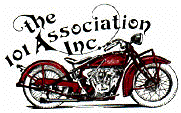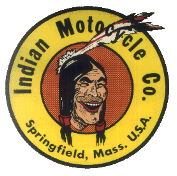thanks Ken lee, I've actually got some information from a friend, he lent me his book and I copied a page so here it comes, could help someone else in the future!
Valve timing of the Indian scout published by J B Nicholson in the MODERN MOTORCYCLE MECHANICS book (1953 fourth edition)
Checking valve and ignition timing
It is good policy to make a quick check on valve and ignition timing to piston movement before fitting cylinder heads. Revolve motor slowly via rear wheel with high gear engaged. On standard twin models, there is a slight amount of valve overlap, the inlet valve opening when piston is about 1/16” before top of exhaust stroke and exhaust valve closing when piston is about 1/16” down on the inlet stroke. Special speed models using special cams have considerably more overlap. On the Bonneville motor models, inlet valve commences opening with piston approximately 3/8” before top of exhaust stroke and exhaust valve closing 3/8” down on piston on inlet stroke.
Valve timing will be correct unless timing gears have been removed and refitted out of time.
With ignition control advanced and breaker points set .020” fully open (coil ignition), or .015” (magneto ignition), revolve motor slowly in running direction and note that the points just commence to separate on the narrow cam when front piston is 3/8” before top of compression stroke (both valves closed) and that points just separate on the wide breaker cam when the rear piston is 3/8” before top of compression stroke, 3/8” advance on piston is used on standard 45” models.
If timing is checked on both pistons, the possibility of having one cylinder out of time due to accidentally timing on the wrong cam will be eliminated.
cheers
Daniel


